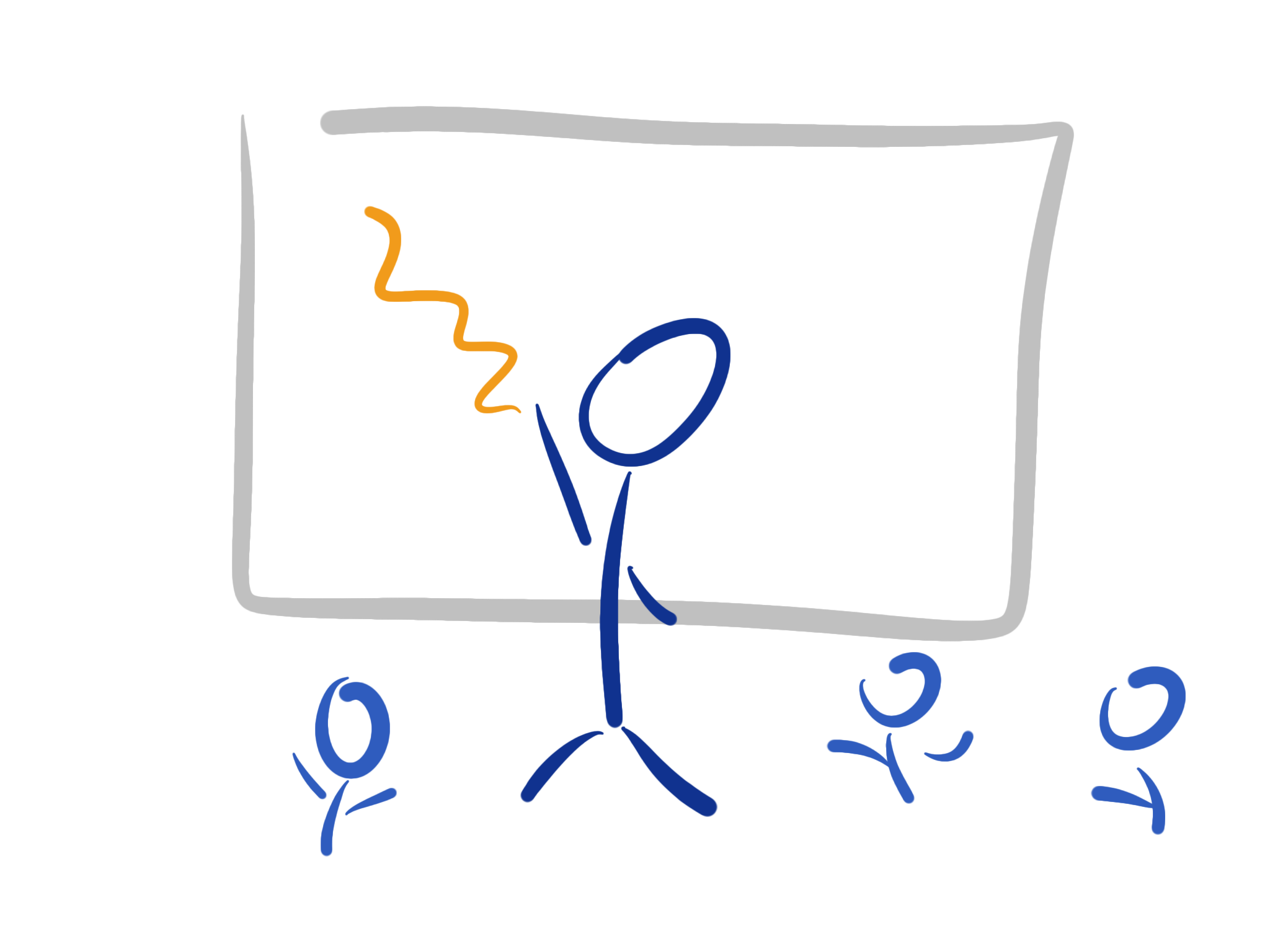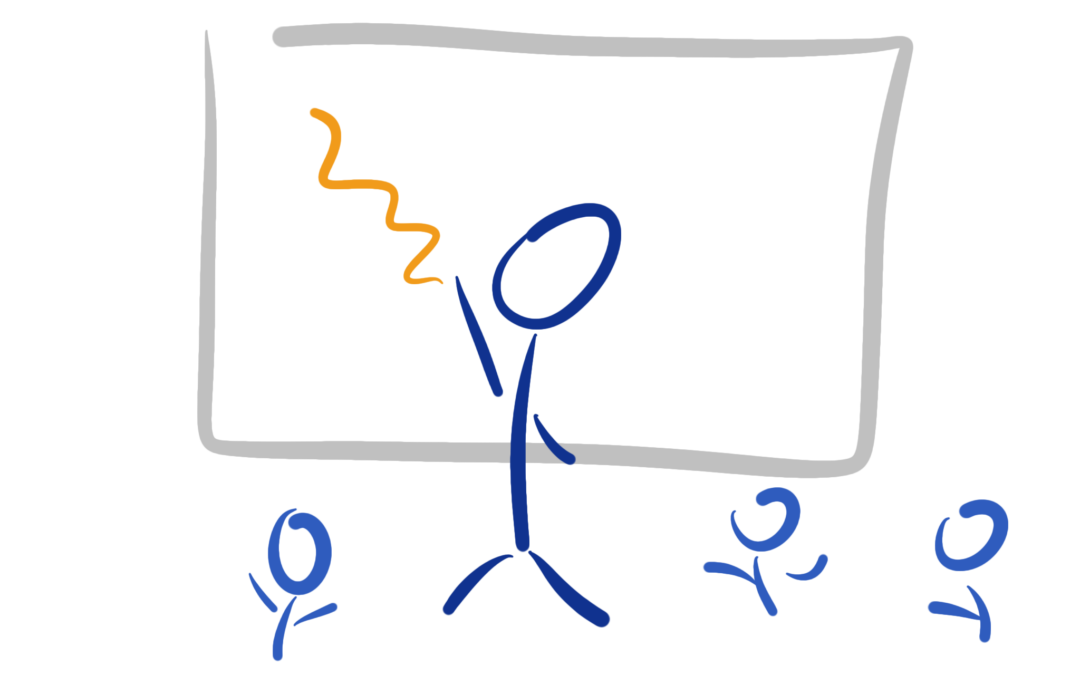
Time needed: 1 to 5 min
Why? Visualized content helps students draw a personal mind map.
When? How do things or systems work? Whenever there are interdependencies between more than one elements you can draw a graphic on the whiteboard.
How? Make sure you have drawn the graphic before in your lesson preparation. In class develop the graphic gradually on whiteboard. Don’t add too much text. You can ask students to copy the graphic after you have finished or ask them to draw it parallel to you.
Any risks? Make sure your graphic is biiiiig and easy to see. Trash or refill old whiteboard pens immediately.
Expert's Advice
Develop and maintain a book of visual vocabulary. How does your standard “person” look like. How do you draw a car. A smart idea. A turning point. You don’t have to look those drawings up from existing sources rather try to find your personal style. Try to learn “sketch-noting” where you find plenty of ideas for your visual/graphic vocabulary.
Power of Vision
Every narration has a visual layer. If you draw certain elements of it to a surface the eyes of your audience are guided along the flow of your words. Show the power of your visual vocabulary.
%
Teacher's Role
Drawing makes you see things clearer, and clearer, and clearer still. The image is passing through you in a physiological way, into your brain, into your memory – where it stays – it’s transmitted by your hands.




